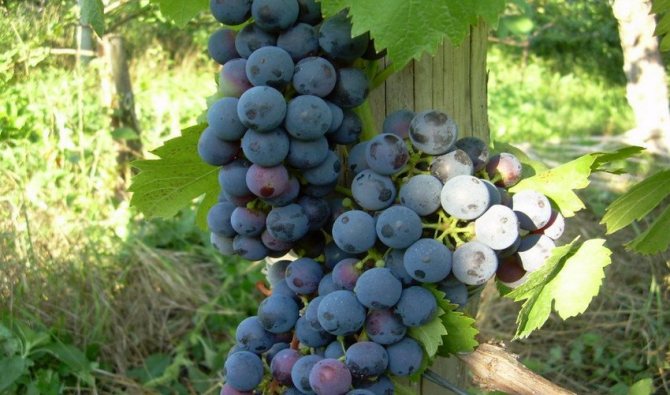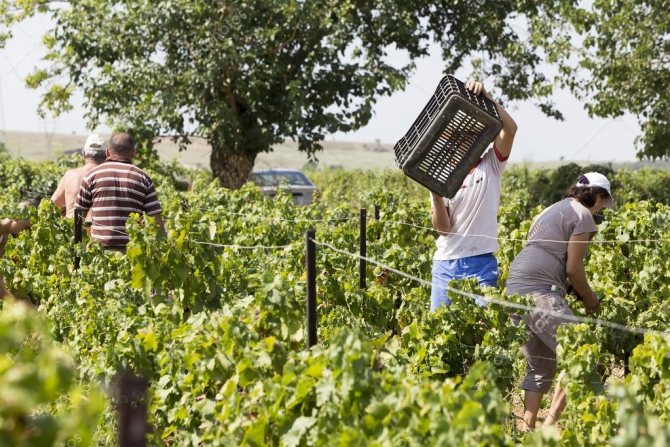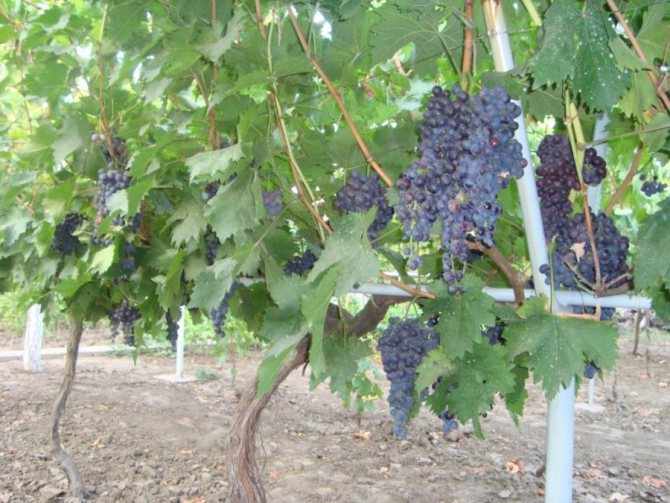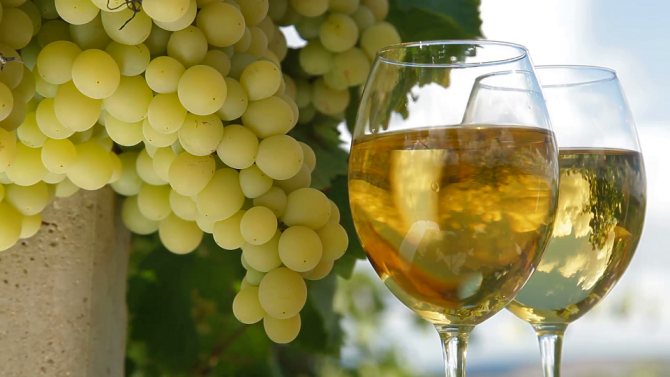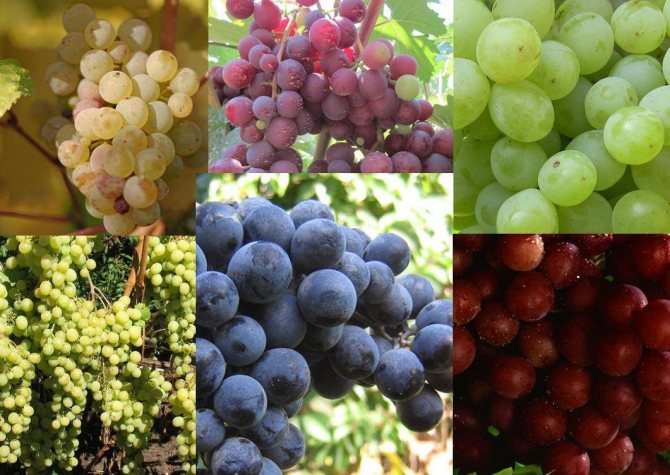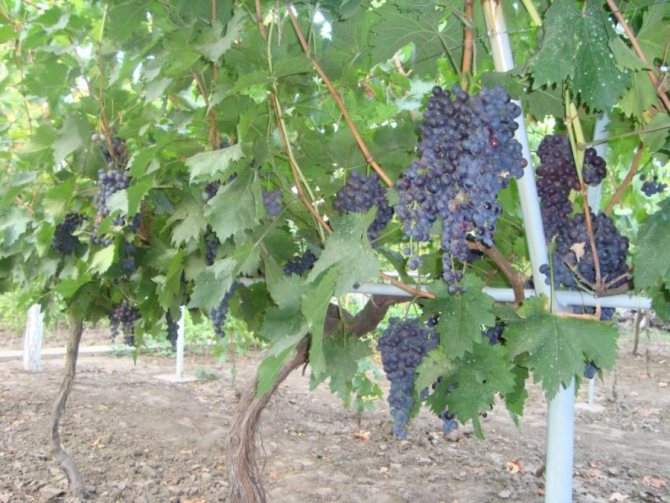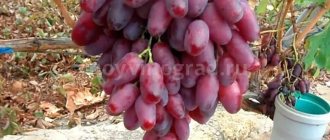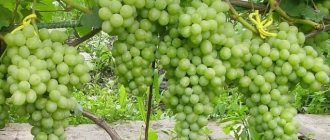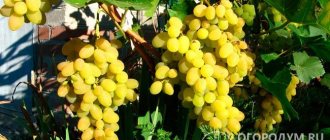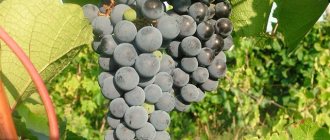The origins of viticulture go back centuries. According to the latest archaeological data, winemaking dates back to the Middle East about 8 thousand years ago. Now this industry is one of the leading in many countries with a warm climate. What can we say about the countless varieties that grapes have acquired. Muscat is heard by many. Meanwhile, this is not a separate hybrid, but a whole group of cultivated grape varieties.
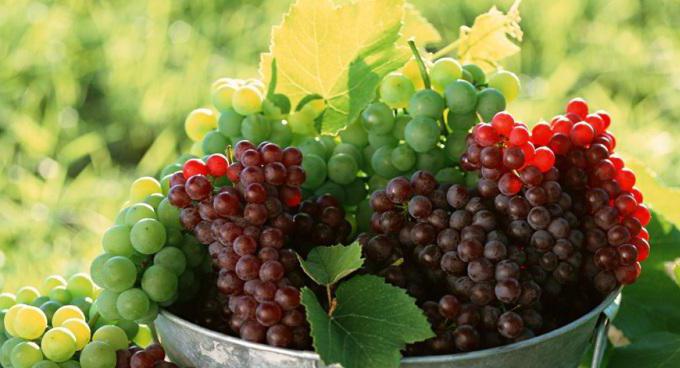
Berries of this variety are valued for their specific musky aroma and are used both fresh and for wine production. Muscats are grown in Hungary, Spain, Portugal, Italy, France, Crimea, Moldova, etc. The most widespread grapes are white muscat (incense), Hamburg, black, pink, Hungarian, Alexandrian. Let's dwell on each of them in more detail.
White Muscat
White muscat, or incense, is also known to winemakers under the name of small berry, Lunel, Frontignan, Tamyanka. This is one of the oldest varieties, most likely originating from Egypt, Syria or Arabia. At the moment, it is widely used in France, Hungary, Spain, Italy, Yugoslavia, Romania, Bulgaria and the United States.
This is a mid-early grape variety. White nutmeg ripens in about 140 days. The plant is medium-sized, the clusters formed on it have a mass of 100 to 450 g and a size of 13-17 cm by 10 cm, a conical shape. Not too large berries (up to 1.5 cm in diameter and weighing about 4 g) "sit" very tightly on the brush. Grapes are distinguished by their ability to accumulate high sugars in fruits (18-25%). It is a good technical variety with a characteristic nutmeg flavor and aroma.


Among the shortcomings, it is worth noting the susceptibility to peas, exactingness to growing conditions, low resistance to frost and diseases. Zoned varieties are gradually being developed, for example, Shatilova white nutmeg (Siberian selection) grows well in the Urals and Siberia.
Care features
Timely, and most importantly, proper care of grape bushes is an integral part of the cultivation of this plant. Muscat is not always demanding and capricious in terms of care. Vineyards need the following agrotechnical measures:
- It is recommended to use a drip irrigation system for irrigation, which very effectively moistens the soil and does not allow excessive waterlogging.
- After manual irrigation, it is advisable to carry out high-quality mulching with peat-humus mixtures, which provide the plant with additional nutrition, which is especially necessary at the stage of active growing season.
- The category of the most important and basic measures for the care of grape bushes includes competent and timely pruning, with the help of which it is possible to suppress the longitudinal polarity of the shoots, as well as regulate growth and fruiting, and create the best conditions for lighting and air exchange.
- The soil around the grape bushes and between the rows should be regularly freed from weeds, and it is also necessary to carry out high-quality, but not too deep loosening, which improves aeration.
- It is very important to carry out effective preventive spraying of vineyards in order to protect against the most dangerous diseases and pests. The most effective fungicides and insecticides should be used for spraying. In addition, it is important to observe the terms of processing plants so as not to harm the grapes.


A properly planted vineyard should be equipped with trellis-like supports to which the vine is fixed. Of no small importance is the timely shelter of young bushes of grapes, as well as not winter-hardy hybrid forms and varieties unstable to low temperature indicators. In regions with harsh climatic conditions, complex-resistant grape varieties and hybrids are also subject to shelter.
You may also be interested in the article in which we talk about wine grape varieties.
Pink Muscat grapes: variety description
A relatively young grape variety known also as Muscat Rouge de Fronttignan, red, Moscato Rosso di Madera, etc. It is a variation of white and appeared supposedly several centuries ago in southwestern Europe. Now it is cultivated in almost all wine-making countries, especially in France, Portugal, Italy, Armenia.
A cluster of medium-sized Pink Nutmeg is 14-18 cm long and 7-10 cm wide. It has a conical-cylindrical shape. The berries are 1-1.8 cm long and 1-1.7 cm wide, arranged very tightly, rounded, colored dark red, have a strong waxy bloom and a pronounced nutmeg aroma.
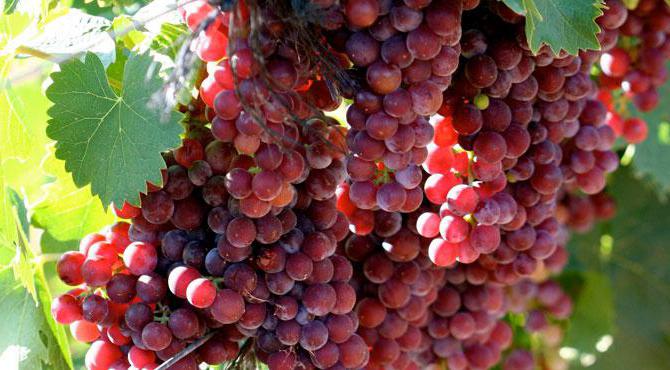

Pink Muscat grapes are distinguished by their instability to mildew and high sensitivity to powdery mildew or, in other words, powdery mildew. Low winter hardiness, but much higher adaptability to different soil conditions and moisture levels compared to the previous variety.
Landing


The peculiarities of planting Muscat are in the right choice of place. If there is a hill at the summer cottage, then it will come in handy for growing grapes. Low places, especially hollows, should be avoided, so the plant will receive less sun, and the soil will sour more. Clay soil is not acceptable for Muscat. If the clay content is clearly exceeded, then river sand and peat are added to the ground.
Grape seedlings are prepared for planting in mid-April, the root system is pretreated in a stimulating additive. Potash fertilizers are introduced into the soil in advance, the variety reacts well to the trace element already from the first year, and in further care, potassium supplements are used to increase yields. After planting, the soil must be well moistened and mulched to maintain the water balance in the soil with straw or sawdust.
Black Muscat
Black Muscat is widely known as Kalyaba or Kayaba. The exact history of its origin is not known, the first mention of the variety dates back to the 19th century. Grapes prefer a warm climate and are most common on the slopes of the South of France, as well as in the Crimea.
Berry clusters are medium in size (up to 15 cm in length), but at the same time they have an impressive mass due to the dense arrangement of fruits (up to 800 g). The berries grow up to 1.9 cm in diameter. They have a rounded shape, dense skin, dark blue at the stage of maturity and covered with a small layer of waxy bloom. The berries are characterized by juiciness, sweetness and pronounced aroma. Black Muscat grapes are used to make raisins due to their high sugar content.


The variety is highly resistant to various leaf rot and diseases, but is susceptible to leafworm. Sensitive to cold, has low resistance to frost, picky about the soil and the level of moisture in it.
Growing recommendations
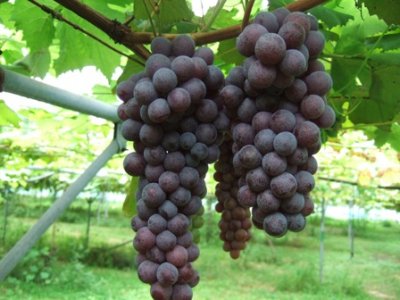

The low ability to withstand winter drops in temperature does not allow the cultivation of Muscat Hamburg in areas with frosty winters.
The minimum temperature that grapes can withstand is 19 degrees. The variety works well on the slopes of the southern and southwestern orientation, prefers light loam or sandy loam, can even put up with sandy soils.
The distance between the rows of the vineyard should preferably be at least 2.3 meters. In a row, bushes are placed at a distance of one and a half meters from each other. The optimal result is given by the formation of the vine according to the two-armed cordon type: the height of the trunk is 1.2 meters.
Stamp-free fan cultivation of the variety is also permissible. The recommended load on the bush is no more than 20 shoots, of which half to 3/4 will be fruitful. Shoots are cut short, focusing on their degree of preservation after overwintering.


Based on the length of the growing season (about 150 days), grapes are classified as medium late varieties. Harvesting maturity occurs in the second half of September.
Hamburg muscat
Hamburg nutmeg is a versatile table variety widely used in Hungary, France, Tunisia, Greece and Romania. In addition, it is found in the fields of the USA, Argentina and some other countries. The bunches of grapes are quite large: they reach 18-20 cm in length, 11-17 cm in width. The brush has a conical shape, loose, branched, the leg of medium length is grassy-green. The berries are large, usually 1.2-2.6 cm long and 1.1-1.7 cm in diameter, round or oval, deep violet-blue color with a dense waxy bloom. The average weight of one bunch is 170-260 g. To disease resistance is very low, thermophilic, picky about soil and moisture.
Properties
Grapes are a valuable gift from nature to humans. And not because the berries are delicious. There are just few cultures on Earth that would combine taste and medicinal properties. For example, in one kilogram of grapes there are about 200 grams of glucose, which, when ingested, excretes from 600 to 1000 calories, which is about a third of the necessary requirement. The berries contain a large amount of amino acids necessary for the human body, such as leucine, glycine, arginine, cystine, etc. Their value is that they are very easily absorbed by the body and take an active part in the synthesis of proteins of the dermis, vitamins, hormones. Regulate fat metabolism (methionine), stimulate growth processes (lysine). Catechins, flavonols neutralize the results of radioactive radiation. And pectin substances exhibit an antitoxic effect and remove heavy metals from the body.
Hungarian Muscat grapes
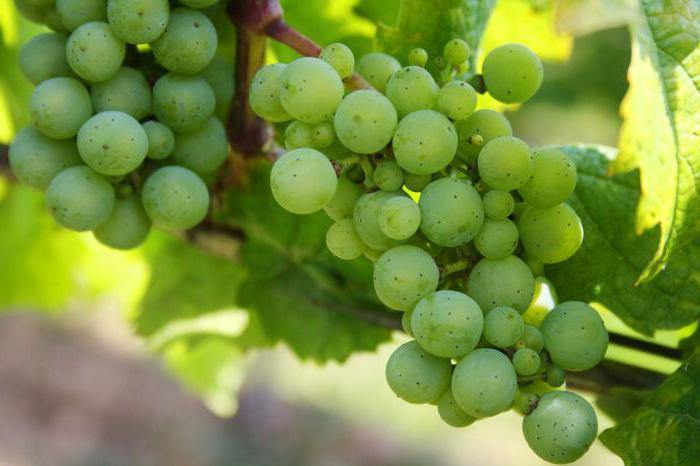

Hungarian Muscat is also known under the names Razdrob, Krokan, Vanilia. This is a universal variety of folk selection, medium early (ripens by the end of September). Plants are distinguished by high vigor of growth, good ripening of shoots, stable indicators of productivity (from medium to high). Bunches of medium size and density, conical in shape. The berries are roundish greenish-yellow in color with a brown “tan”, thick skin, firm and crispy flesh. Hungarian nutmeg is very sensitive to soil and air moisture. With an excess of water, the berries quickly mold or crack. The variety is used for the preparation of wines and juices with a characteristic nutmeg aroma.
What is ill and how to treat
Very early grapes are not distinguished by persistent immunity, therefore, it is necessary to timely process the bushes from pests, to carry out preventive measures against diseases.
White nutmeg diseases:
- gray rot;
- oidium;
- mildew;
- phylloxera;
- powdery mildew;
- anthracnose.
The rainy season increases the risk of gray mold contamination of the vineyard. To prevent mass destruction, the leaves are removed in a timely manner, do not allow overgrowth. It is recommended to plant the vine in a sunny, elevated place.
In drought, the risk of infection with spider mites, phylloxera, increases. In this case, timely watering, irrigation of the leaves is recommended.The use of insecticides is indicated before fruit formation. This is done in early spring before the flowers bloom.
As for Shatilov's white nutmeg, this variety is resistant to disease, pest attacks and tolerates winter well.
Alexandrian Muscat
Alexandrian Muscat grapes were grown in ancient Arabia, now the variety is widespread in Spain, Greece, Italy, in the South of France. Universal table grapes, forming large loose clusters (15-20 cm in length, 10-13 cm in width) weighing up to 230-240 g. Large berries are oval, yellow (with incomplete ripeness with a green tint) and a matte surface with spots of brown "tan". The flesh of the fruit is fleshy, dense and juicy with a strongly pronounced nutmeg aroma.
The variety is characterized by very low winter hardiness and resistance to diseases, exactingness to the soil. Alexandria nutmeg grows best on fertile and moderately moist soils. By purpose it is universal, it is used for the preparation of wines, compotes, preserves, juices, raisins.
Advantages and disadvantages
Very early white nutmeg is prized for the following positive qualities:
- high productivity;
- good portability;
- long-term storage;
- standard care;
- universal purpose;
- early ripening of fruits;
- berries hang on bunches for a long time, do not crumble.
Of the shortcomings, gardeners note the following:
- low immunity to diseases, garden pests;
- poor frost resistance;
- additional pollination is required to increase yields;
- capricious in leaving.
With proper care, all flaws are eliminated. If you leave everything to chance, you will not be able to get a harvest of delicious grapes. The culture does not tolerate thickening, excessive humidity, dry weather, freezes in winter without shelter.
Muscat wines


For people far from viticulture, when they mention wine, it is often nutmeg that comes to mind first. The grapes described above are just part of the rich variety. Only Isabella overtakes in popularity.
It is not difficult to recognize its rich and bright taste, it is determined immediately. Muscat in wines manifests itself most fully and strongly. One of the most famous nutmeg drinks is called Asti. White sparkling wine is produced in southern Piedmont (Italy). It is made exclusively from White Muscat, the oldest variety in the region.
However, several countries can boast of their famous excellent Muscat wines at once. In France, these are "Bom de Venise" (white, fortified), "Mirval", "Lunel", "Frontignan", "Cap Corse" (from Corsica). Sunny Italy offers wine lovers the yellow-golden "Moscato Jallo" or "Goldmuskateller", Spain - "Moscatel" (Malaga is especially popular), the USA - "Orange" nutmeg, Greece - "Samos", Crimea - the famous "Massandra".
Breeding history
The variety originated in the greenhouses of Victorian England and was first described in 1858. Seward Snow, a gardener at the Earl Gray estate, described how Muscat of Hamburg originated from the crossing of the black Hamburg grape (an old synonym for Schiave Gross) with the White Muscat of Alexandria. A 2003 DNA test confirmed this information.
In the West, the variety is better known under the name Black Muscat, although it has two dozen more synonyms. In the USA it is called Golden Hamburg, in France - Muscat de Hamburg. In the countries of the former USSR, in addition to the name Muscat of Hamburg, along with the American and French synonyms, the name Black Muscat of Alexandria is used.

